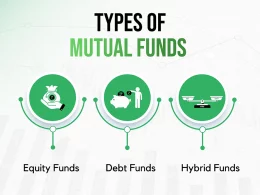After a long and tumultuous period of economic uncertainty, the eurozone’s business activity has finally rebounded in a strong showing. This news is suggesting that the eurozone may be on its way to economic recovery, which could be good news for investors. But what does this mean for investors? In this blog post, we’ll explore what recent reports suggest about the future of the eurozone economy and what it could mean for investors. We’ll also look at potential risks and challenges that may lie ahead. Read on to find out more.
The eurozone’s business activity rebounds stronger than expected in September
The eurozone’s business activity rebounded stronger than expected in September, according to the latest data from Markit. The purchasing managers’ index (PMI) rose to 54.1 from 52.6 in August, beating expectations for a reading of 53.0.
This is welcome news for the eurozone economy, which has been struggling in recent months. The strong rebound in business activity suggests that the economy may be starting to turn a corner.
What does this mean for investors?
There are a few things to consider. First, the strong rebound in business activity is likely to support corporate profits and share prices in the near term. Second, it could lead to higher interest rates from the European Central Bank (ECB), which would be positive for bank stocks but negative for bond prices. Finally, it is worth keeping an eye on inflation data over the coming months to see if the stronger economic growth leads to higher inflationary pressures.
The services sector was the main driver of the rebound
The services sector has been the main driver of the rebound in eurozone business activity, according to the latest data from IHS Markit. The sector returned to growth in September, following a contraction in August, and was the largest contributor to the overall expansion in activity. This is positive news for investors, as the services sector accounts for the lion’s share of economic activity in the bloc.
The manufacturing sector also returned to growth in September, after two consecutive months of contraction. However, it remains lagging behind the services sector and was only the third-largest contributor to the overall expansion. This suggests that there is still some way to go before manufacturing activity returns to its pre-pandemic levels.
The construction sector continued to contract in September, albeit at a slower pace than in August. This is disappointing news, as construction activity had been showing signs of stabilising in recent months. However, with other sectors of the economy starting to pick up, it is hoped that this will provide a boost to construction activity in the coming months.
The manufacturing sector also showed signs of improvement
The Eurozone’s manufacturing sector also showed signs of improvement in March, according to the latest data. The Purchasing Managers’ Index (PMI) for the manufacturing sector rose to 55.2 in March from 54.3 in February. This was stronger than the expected reading of 54.5 and marked the highest level since December 2017.
The PMI is a gauge of factory activity, so the rebound suggests that the manufacturing sector is starting to pick up after a sluggish start to the year. The improvement was driven by a sharp increase in new orders, which rose at the fastest pace in almost six years. This suggests that demand is picking up and businesses are more confident about the future.
The strong data will be welcomed by policymakers as it adds to evidence that the Eurozone economy is slowly recovering from its slump at the end of last year. However, it’s worth noting that manufacturing only makes up around 15% of the Eurozone economy, so there is still some way to go before we can say that the recovery is firmly entrenched.
The unemployment rate in the eurozone remained unchanged at 8.1%
The unemployment rate in the eurozone remained unchanged at 8.1% in August, according to the latest data from Eurostat. This is a positive sign for the economy, as it suggests that businesses are starting to feel more confident and are hiring more workers. The rebound in business activity is also good news for investors, as it indicates that the economy is on track to recover from its recent slowdown.
What does this mean for investors?
Investors in the eurozone can expect to see increased business activity in the near future, according to new data from the European Commission. The data shows that business activity in the eurozone rebounded stronger than expected in the first quarter of 2017, growing by 0.6%. This is good news for investors, as it indicates that the eurozone economy is on track for a recovery.
What does this mean for investors?
Investors can expect to see increased business activity and a recovery in the eurozone economy. This is positive news for those invested in the region, as it indicates that the market is improving.
Conclusion
As the Eurozone business activity rebounds stronger than expected, investors have been presented with a great opportunity to capitalize on the increased economic growth. By taking advantage of this positive trend and investing in markets that are experiencing strong gains, investors can benefit from higher returns. In addition, an improved business environment means more jobs and greater consumer spending which can lead to long-term stability in the market. All things considered, it is an exciting time for those looking to make investments in the Eurozone.











